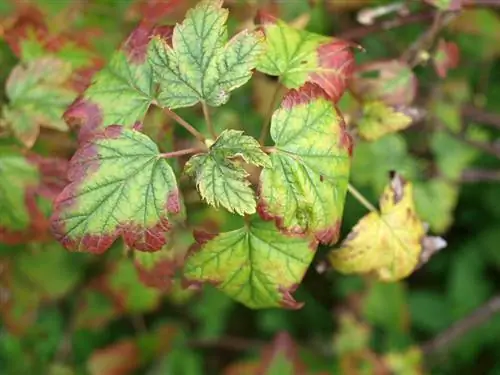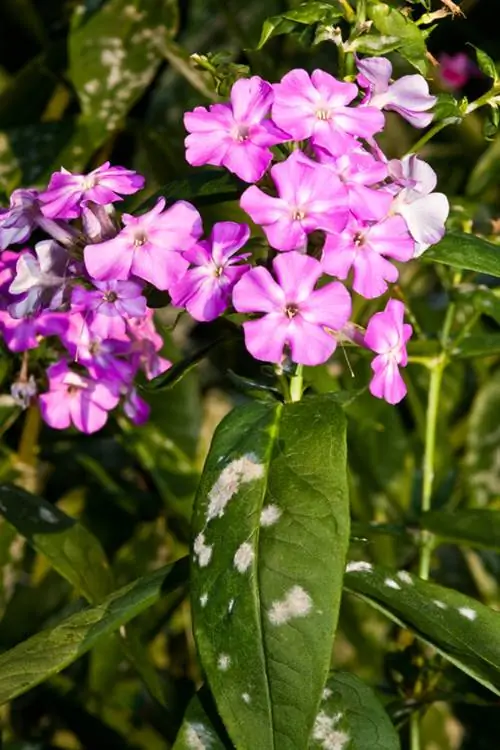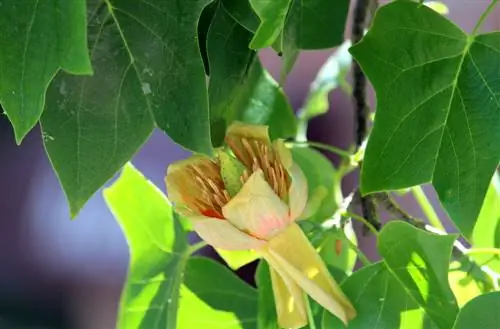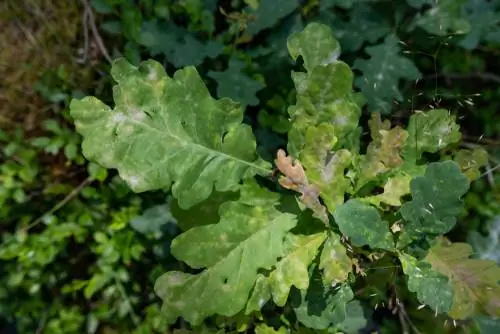- Author admin [email protected].
- Public 2023-12-16 16:46.
- Last modified 2025-01-23 11:20.
Currants are quite easy to care for and resilient. However, some diseases can cause problems for the plants. The most common diseases and what you can do about them.
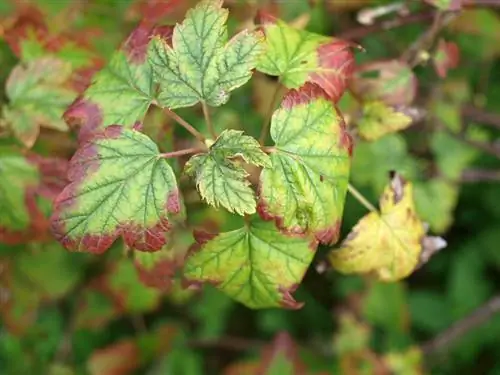
What diseases occur in currants and what can you do about them?
The most common diseases of currants are nettle leaf disease, American mildew, columnar rust, leaf drop disease and red pustule disease. Prevention and treatment include removing infected plant parts, preventative spray treatments with nettle decoction or horsetail broth and a good choice of location and nutrient supply.
The most common diseases of currants
- Nettle leafiness
- American currant or gooseberry mildew
- pillar grate
- Leaf drop disease
- Red pustule disease
Nettle leafiness
It can be recognized by the fact that the leaves of the currant change color and the shoots produce fewer flowers.
The cause is a virus that is transmitted by the currant gall midge.
Cut off affected parts generously and dispose of them. As a preventive measure, spray the plant with tansy tea and don't leave too many shoots when pruning.
American mildew
If a white-gray coating appears on the leaves of the currant, the plant is suffering from powdery mildew. This is a fungal infection.
All affected areas are cut off and disposed of. As a preventative measure, you should regularly spray the currants with nettle broth or horsetail broth.
Chemical agents should not be used as you will then no longer be able to harvest and consume the fruits.
pillar grate
If rusty to orange pustules appear on the leaves in autumn, the currant is suffering from columnar rust.
This is a fungus that overwinters in five-needle pines in the area and spreads from there.
Collect all affected leaves from the bush and ground and throw them in the trash can. As a preventive measure, all pine trees within a radius of several hundred meters would have to be felled, as this was the only way to finally eradicate the fungus.
Leaf drop disease
Leaf drop disease occurs primarily after a very wet spring. This fungal disease only affects white and red currants.
The leaves show brown spots, curl up and eventually fall off.
The leaves must be picked up and disposed of in the trash can.
Red pustule disease
Red pustule disease occurs when the leaves of the currant bush wilt and fall off in early summer. At the same time, red pustules can be seen on the bark of the shoots.
As a care measure, all affected shoots must be cut. Preventive treatments with nettle decoction are helpful.
Tips & Tricks
He althy currant plants are more resistant to diseases and pest attacks than sickly ones. Ensure a good location and a sufficient supply of nutrients. Light the plants regularly.

